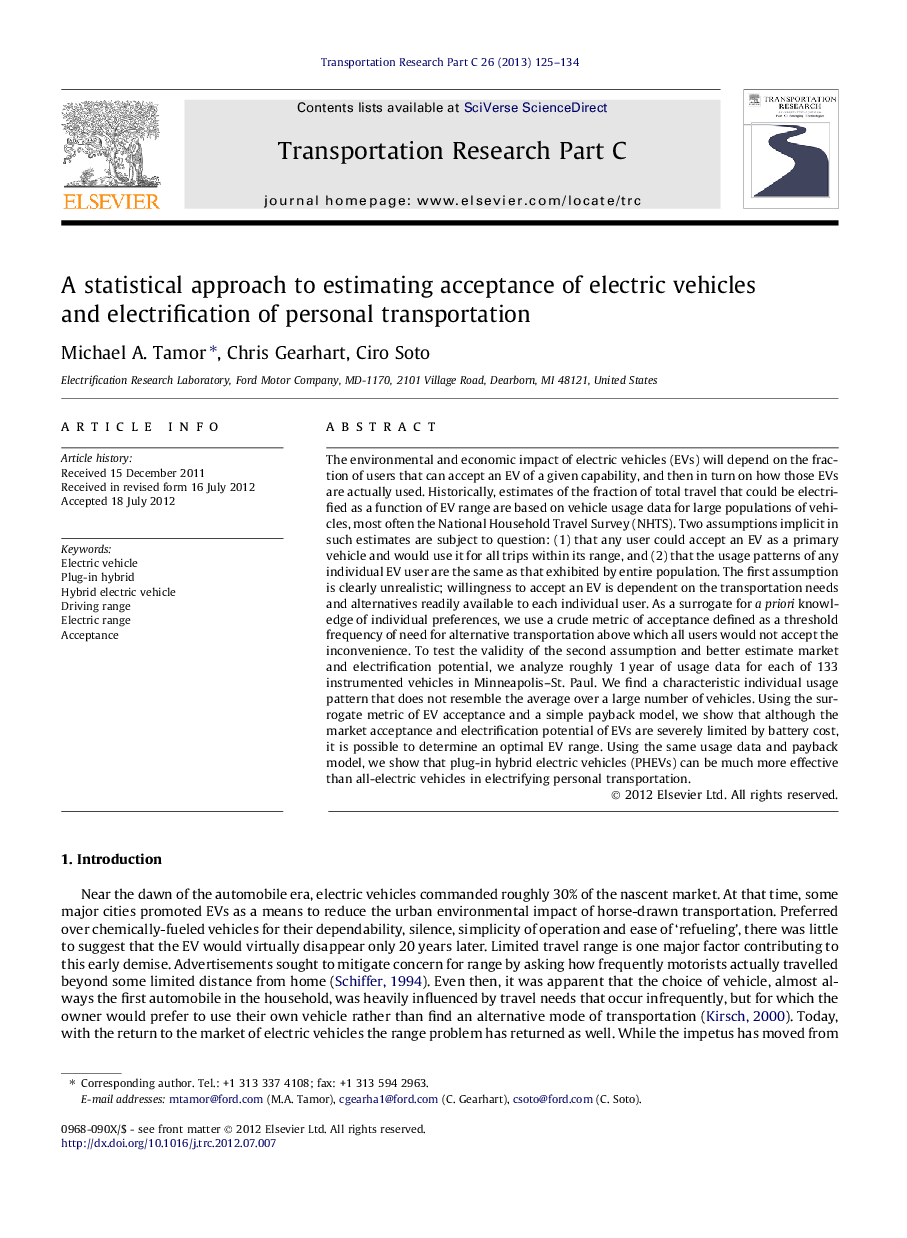| کد مقاله | کد نشریه | سال انتشار | مقاله انگلیسی | نسخه تمام متن |
|---|---|---|---|---|
| 525061 | 868884 | 2013 | 10 صفحه PDF | دانلود رایگان |

The environmental and economic impact of electric vehicles (EVs) will depend on the fraction of users that can accept an EV of a given capability, and then in turn on how those EVs are actually used. Historically, estimates of the fraction of total travel that could be electrified as a function of EV range are based on vehicle usage data for large populations of vehicles, most often the National Household Travel Survey (NHTS). Two assumptions implicit in such estimates are subject to question: (1) that any user could accept an EV as a primary vehicle and would use it for all trips within its range, and (2) that the usage patterns of any individual EV user are the same as that exhibited by entire population. The first assumption is clearly unrealistic; willingness to accept an EV is dependent on the transportation needs and alternatives readily available to each individual user. As a surrogate for a priori knowledge of individual preferences, we use a crude metric of acceptance defined as a threshold frequency of need for alternative transportation above which all users would not accept the inconvenience. To test the validity of the second assumption and better estimate market and electrification potential, we analyze roughly 1 year of usage data for each of 133 instrumented vehicles in Minneapolis–St. Paul. We find a characteristic individual usage pattern that does not resemble the average over a large number of vehicles. Using the surrogate metric of EV acceptance and a simple payback model, we show that although the market acceptance and electrification potential of EVs are severely limited by battery cost, it is possible to determine an optimal EV range. Using the same usage data and payback model, we show that plug-in hybrid electric vehicles (PHEVs) can be much more effective than all-electric vehicles in electrifying personal transportation.
► We analyze 1 year of driving data from 133 vehicles in the Minneapolis–St. Paul.
► Willingness to ’accept’ an EV is highly sensitive to the tolerance for inconvenience.
► EV range of 150–200 miles is the optimal balance between cost and fuel savings.
► Battery cost must be unrealistically low to achieve large EV market penetration.
► Plug-in hybrids (PHEV) are viable at realistic battery cost.
Journal: Transportation Research Part C: Emerging Technologies - Volume 26, January 2013, Pages 125–134